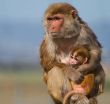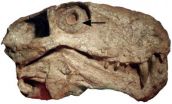(Press-News.org) (SACRAMENTO, Calif.) — Infant rhesus monkeys receiving different diets early in life develop distinct immune systems that persist months after weaning, a study by researchers from UC Davis, the California National Primate Research Center (CNPRC) at UC Davis and UC San Francisco have shown. The study, which compares breast- and bottle-fed infants, appears online September 3 in Science Translational Medicine.
While the researchers expected different diets would promote different intestinal bacteria (microbiota), they were surprised at how dramatically these microbes shaped immunologic development. Specifically, breast-fed macaques had more "memory" T cells and T helper 17 (TH17) cells, which are known to fight Salmonella and other pathogens.
These differences persisted for months after the macaques had been weaned and placed on identical diets, indicating that variations in early diet may have long-lasting effects.
"We saw two different immune systems develop: one in animals fed mother's milk and another in those fed formula," said Dennis Hartigan-O'Connor, a CNPRC scientist in the Infectious Diseases Unit and Reproductive Sciences and Regenerative Medicine Unit, and an assistant professor in the Department of Medical Microbiology and Immunology at UC Davis.
"But what's most startling is the durability of these differences. Infant microbes could leave a long-lasting imprint on immune function," he said.
Previous research has highlighted the relationship between breast milk, microbiota and the developing immune system. For example, sugars in breast milk help grow specific bacteria, which in turn support certain immune cells. This new study is an important step towards understanding how these separate pieces link together and how they might influence the immune systems response to infections or vaccinations.
Macaques are born with virtually no TH17 cells, and must develop them during the first 18 months of life. Hartigan-O'Connor and other researchers have noted that some macaques develop large TH17 populations, while others have few of these cells. This could profoundly affect the animals' ability to fight infection, particularly SIV, the simian strain of HIV.
To understand this variability, the investigators followed six breast- and six bottle-fed rhesus macaques from age five months to 12 months. At six months, they found significant differences in the two groups' microbiota.
Specifically, the breast-fed macaques had larger numbers of the bacteria Prevotella and Ruminococcus, while the bottle-fed group had a greater abundance of Clostridium. Overall, the microbiota in breast-fed macaques was more diverse than in the bottle-fed group.
The big surprise came when examining their immune systems. By 12 months, the two groups showed significant contrasts, with the differences centered on T cell development. The breast-fed group had a much larger percentage of experienced memory T cells, which are better equipped to secrete immune defense chemicals called cytokines, including TH17 and interferon-producing cells.
"This is the first time researchers have shown that these immunologic characteristics may be imprinted in the first new months of life," said Amir Ardeshir, the study's first author. "Our study suggests that the gut microbiota present in early life may leave a durable imprint on the shape and capacity of the immune system, a programming of the system if you will."
Further investigation may have identified chemicals that drive these differences. For example, arachidonic acid, which stimulates the production of TH17 cells and is found in macaque breast milk, was tightly linked to TH17 cell development. Previous studies have suggested it can influence T cell development. The researchers caution that these chemicals must be tested in larger studies to understand their effects.
While this research provides a fascinating window into immune cell development in macaques, Hartigan-O'Connor cautions that it doesn't prove the same mechanisms exist in people. The lab is planning similar studies in humans to test that hypothesis. In addition, this study does not prove a link between breastfeeding and better health.
"There's a developmental shape to the immune system that we don't often consider," Hartigan-O'Connor said. "It's dramatic how that came out in this study. There's a lot of variability in how both people and monkeys handle infections, in their tendency to develop autoimmune disease, and in how they respond to vaccines. This work is a good first step towards explaining those differences."
INFORMATION:
Other authors include: Nicole Narayan, Gema Mendez-Lagares, Ding Lu, and Koen K. A. Van Rompay, Marcus Rauch, Susan V. Lynch and Yong Huang at UC San Francisco.
This research was supported by grants from the National Institute of Allergy and Infectious Diseases (K23AI081540), the Bill and Melinda Gates Foundation under a Grand Challenges Exploration award (#52094) and by Office of the Director of NIH (P51-OD011107).
Breast vs. bottle feeding in rhesus monkeys
Infants receiving different diets after birth develop distinct immune systems
2014-09-04
ELSE PRESS RELEASES FROM THIS DATE:
Liver injury caused by herbals, dietary supplements rises in study population
2014-09-04
New research shows that liver injury caused by herbals and dietary supplements increased from 7% to 20% in a U.S. study group over a ten-year period. According to the study published in Hepatology, a journal of the American Association for the Study of Liver Diseases, liver injury caused by non-bodybuilding supplements is most severe, occurring more often in middle-aged women and more frequently resulting in death or the need for transplantation than liver injury from bodybuilding supplements or conventional medications."
Nearly half of all adult Americans consume herbal ...
Most accurate measures of gene expression
2014-09-04
RNA-sequencing allows measuring the gene expression of humans or other organisms. The method has recently become very popular in bioscience and medical research, and it is being adopted to clinical applications. Compared to previous methods, RNA-sequencing enables the study of alternative gene isoforms or transcripts, which are formed for example through the process of alternative splicing.
The analysis of the large amount of data produced by RNA-sequencing requires many advanced computational methods. Analysis of transcript level data is especially demanding and the ...
Yellow filters in eye result in higher visibility, UGA research finds
2014-09-04
Athens, Ga. – Human eyes naturally contain yellow pigment in the macula, a spot near the center of the retina responsible for high-resolution vision. Those with more yellow in their macula may have an advantage when it comes to filtering out atmospheric particles that obscure one's vision, commonly known as haze. According to a new University of Georgia study, people with increased yellow in their macula could absorb more light and maintain better vision in haze than others.
Billy Hammond, UGA professor of brain and behavioral sciences and director of the Vision Sciences ...
Phase III FIRST (MM-020/IFM 07-01) trial of REVLIMID (lenalidomide) plus dexamethasone in newly diagnosed multiple myeloma patients who are not candidates for stem cell transplant published in New Eng
2014-09-04
SUMMIT, N.J. (Sept. 4, 2014) – Celgene Corporation (NASDAQ:CELG) today announced that data from FIRST (MM-020/IFM 07-01)—an open-label phase III randomized study of continuous REVLIMID (lenalidomide) in combination with dexamethasone in patients newly diagnosed with multiple myeloma (NDMM) who are not candidates for stem cell transplant—have been published in the Sept. 4 issue of the New England Journal of Medicine.
Initial findings, including that the trial had met its primary endpoint of progression free survival (PFS), were reported during the plenary session at the ...
How good is the fossil record?
2014-09-04
Methods have been developed to try to identify and correct for bias in the fossil record but new research from the Universities of Bristol and Bath, suggests many of these correction methods may actually be misleading.
The study, led by Dr Alex Dunhill, formerly at the Universities of Bristol and Bath and now at the University of Leeds, explored the rich and well-studied fossil record of Great Britain. Professional geological work has been done in the British Isles for over 200 years and the British Geological Survey (dating from the 1830s) has amassed enormous, detailed ...
To clean air and beyond: Catching greenhouse gases with advanced membranes
2014-09-04
Researchers in Japan have engineered a membrane with advanced features capable of removing harmful greenhouse gases from the atmosphere. Their findings, published in the British journal Nature Communications, may one day contribute to lower greenhouse gas emissions and cleaner skies.
Greenhouse gases, originating from industrial processes and the burning of fossil fuels, blanket the earth and are the culprits behind current global warming woes. The most abundant among them is carbon dioxide, which made up 84% of the United State's greenhouse gases in 2012, and can linger ...
Curb sitting time to protect aging DNA and possibly extend lifespan
2014-09-04
Reducing sedentary activity appears to lengthen telomeres, which sit on the end of chromosomes, the DNA storage units in each cell, the findings show.
Telomeres are important because they stop chromosomes from 'fraying' or clumping together and 'scrambling' the genetic codes they contain, performing a role similar to the plastic tips on the end of shoelaces, to which they have been likened.
Longevity and a healthy lifestyle have been linked to telomere length, but whether physical activity can make any difference, is not clear.
The researchers therefore analysed the ...
The Lancet Diabetes & Endocrinology: Global epidemic of diabetes threatens to jeopardise further progress in tuberculosis control
2014-09-04
The rapid increase in rates of type 2 diabetes* in low- and middle-income countries where tuberculosis (TB) is endemic could hamper global efforts to control and eliminate TB, according to a new three-part Series about TB and diabetes, published in The Lancet Diabetes & Endocrinology.
The Series indicates that 15% of adult TB cases worldwide are already attributable to diabetes. These diabetes-associated cases correspond to over 1 million cases a year, with more than 40% occurring in India and China alone. If diabetes rates continue to rise out of control, the present ...
Ancient mammal relatives were active at night 100 million years before origin of mammals
2014-09-04
Most living mammals are active at night (or nocturnal), and many other mammal species are active during twilight conditions. It has long been thought that the transition to nocturnality occurred at about the same time as mammals evolved, around 200 million years ago. This thinking was based on on features such as the large brains of mammals (good for processing information from senses like hearing, touch, and smell) and the details of light-sensitive chemicals in the eyes of mammals.
It turns out that nocturnal activity might have a much older origin among ancient mammal ...
E-cigarettes may promote illicit drug use and addiction
2014-09-04
VIDEO:
Columbia researchers discuss how e-cigarettes may promote illicit drug use and addiction.
Click here for more information.
NEW YORK, NY (September 3, 2014)—Like conventional cigarettes, electronic cigarettes (or
e-cigarettes) may function as a "gateway drug"—a drug that lowers the threshold for addiction to
other substances, such as marijuana and cocaine—according to the 120th Shattuck lecture, presented to the Massachusetts Medical Society by Columbia researchers ...
LAST 30 PRESS RELEASES:
Decoupling the HOR enhancement on PtRu: Dynamically matching interfacial water to reaction coordinates
Sulfur isn’t poisonous when it synergistically acts with phosphine in olefins hydroformylation
URI researchers uncover molecular mechanisms behind speciation in corals
Chitin based carbon aerogel offers a cleaner way to store thermal energy
Tracing hidden sources of nitrate pollution in rapidly changing rural urban landscapes
Viruses on plastic pollution may quietly accelerate the spread of antibiotic resistance
Three UH Rainbow Babies & Children’s faculty elected to prestigious American Pediatric Society
Tunnel resilience models unveiled to aid post-earthquake recovery
Satellite communication systems: the future of 5G/6G connectivity
Space computing power networks: a new frontier for satellite technologies
Experiments advance potential of protein that makes hydrogen sulfide as a therapeutic target for Alzheimer’s disease
Examining private equity’s role in fertility care
Current Molecular Pharmacology achieves a landmark: real-time CiteScore advances to 7.2
Skeletal muscle epigenetic clocks developed using postmortem tissue from an Asian population
Estimating unemployment rates with social media data
Climate policies can backfire by eroding “green” values, study finds
Too much screen time too soon? A*STAR study links infant screen exposure to brain changes and teen anxiety
Global psychiatry mourns Professor Dan Stein, visionary who transformed mental health science across Africa and beyond
KIST develops eco-friendly palladium recovery technology to safeguard resource security
Statins significantly reduce mortality risk for adults with diabetes, regardless of cardiovascular risk
Brain immune cells may drive more damage in females than males with Alzheimer’s
Evidence-based recommendations empower clinicians to manage epilepsy in pregnancy
Fungus turns bark beetles’ defenses against them
There are new antivirals being tested for herpesviruses. Scientists now know how they work
CDI scientist, colleagues author review of global burden of fungus Candida auris
How does stroke influence speech comprehension?
B cells transiently unlock their plasticity, risking lymphoma development
Advanced AI dodel predicts spoken language outcomes in deaf children after cochlear implants
Multimodal imaging-based cerebral blood flow prediction model development in simulated microgravity
Accelerated streaming subgraph matching framework is faster, more robust, and scalable
[Press-News.org] Breast vs. bottle feeding in rhesus monkeysInfants receiving different diets after birth develop distinct immune systems




